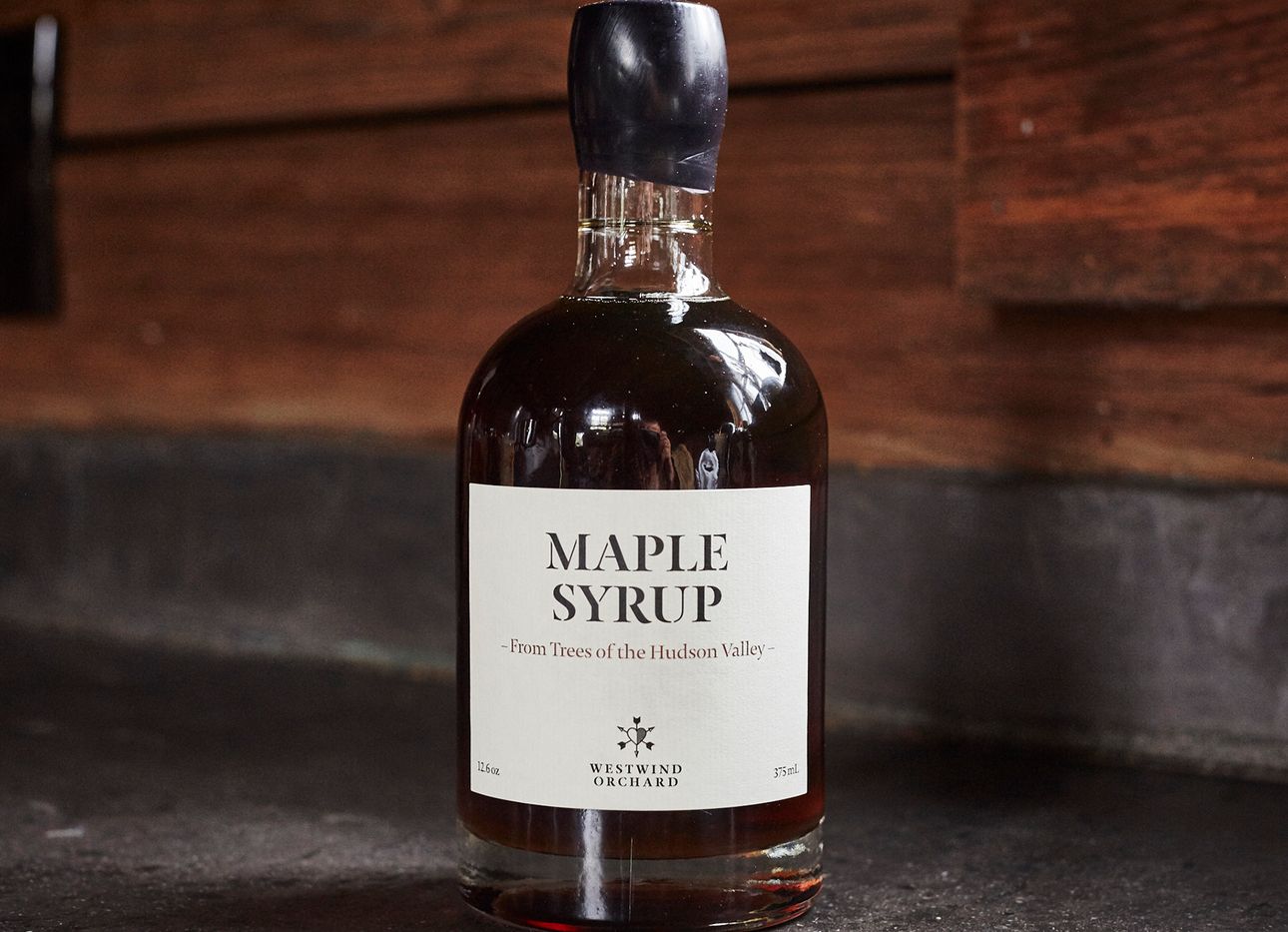
Westwind Orchard Makes the Tastiest Maple Syrup We’ve Ever Tried
Eighteen years ago, Italian-born Fabio Chizzola traded fashion photography for farming, when he purchased an heirloom apple farm in upstate New York, where he now runs Westwind Orchard year-round. While summer and fall are easily his busiest seasons, with spring spent preparing for both, Chizzola tells us about the peak, all-too-brief harvest he looks forward to each winter: maple syrup.
“We’re mainly an apple orchard. We make alcoholic cider, we serve food, allow folks to pick their own apples, and we also grow some plums, raspberries, blackberries, Asian pears, make jams, and harvest honey—we’ve widened our set of crops over the years, because you never know if there will be frost in the spring, and how or if that will affect each. In the beginning, I would split time between the city and the farm, but now it’s been some time since I’ve fully relocated here. I work sixteen-hour days. Especially in the summer, it’s just nonstop.
Before farming, the calendar year and summer used to signify a month back home in Italy—now, I vacation in the winter. Winter, for me, is when I take care of myself—I have more time. But we’re open all year. And at the end of my property, I have more than two hundred maple trees. A few years ago, I was crazy enough to say, “Okay, we’re not busy in the winters. Why don’t we get busy? We can try to make maple syrup with the trees.” So now we don’t have as much of a break in the winters. [Laughs]
To harvest maple syrup, we have sap lines set up, which tap all of our trees and collect [it] into a series of large buckets. We work with the weather: If it’s too cold during the day—let’s say, 20 degrees [Fahrenheit]—the sap won’t run because the trees will freeze over. When it’s above 32 degrees during the day, and below that at night, that’s when it’s prime time for maple syrup. Here, where we’re up north, but not too far from the city, the peak season will happen in the next few weeks and last up to the start of March. But it really depends on the microclimate of where you are. In Canada, they have at least two and a half months of maple syrup.
Tapping the tree is quite simple: We go maybe an inch and a half in, and then we just let the sap flow and collect it. Forty gallons of maple sap will yield one gallon of maple syrup. Sap is basically water with 1.5 to 3 percent sugar content, so we boil that off and reduce [it] in a giant evaporator until the sugar content is closer to 68 percent. By then, the color deepens and the texture is much thicker. We make two types: a normal maple syrup and one that’s aged in bourbon casks for a smoky taste. The second one’s my favorite. I’ll put it on granola in the morning; we also use maple syrup on one of our pizzas, a sweet one with ricotta, apples, and whatever fruit is in season. It’s fantastic. It’s all-natural, but it’s a sugar, of course—you can’t really have too much of it.”